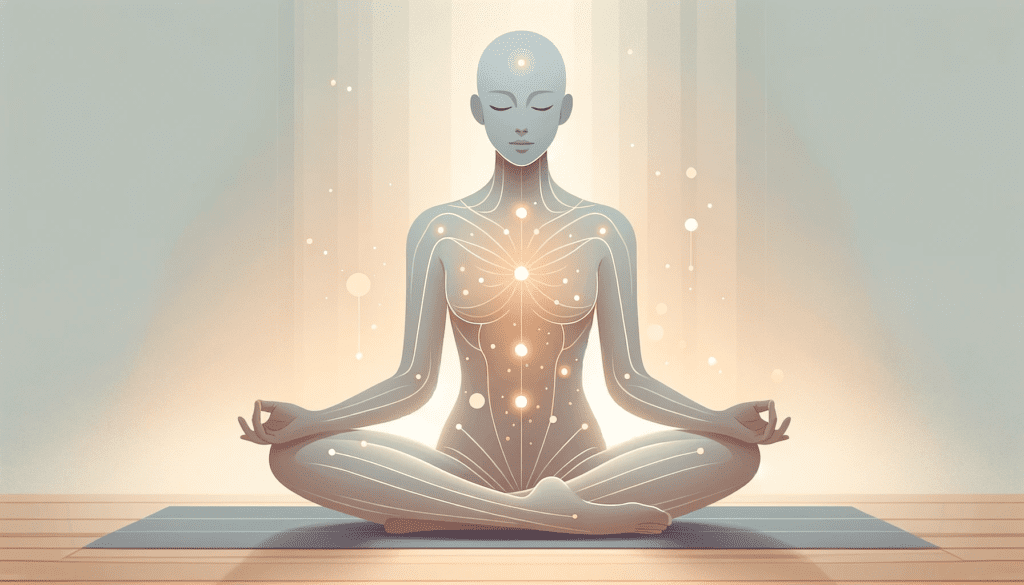Dmitrij Achelrod PhD
Dmitrij Achelrod PhD
In today’s fast-paced world, finding a moment of peace can seem like a distant dream. However, meditation offers a sanctuary, a place where we can retreat to rediscover our inner calm and clarity. Whether you’re a seasoned meditator or just beginning your journey, the key to a profound meditation experience often lies in what we choose to focus on. Especially for beginners, it might be hard to know what to focus on during meditation. In this post, we’ll explore 15 diverse and powerful focal points for meditation, each offering a unique path to tranquility and self-awareness. From the rhythmic dance of breath awareness to the serene paths of guided imagery, these techniques are gateways to deeper understanding and peace. In addition, cultivating a meditation practice can be extremely useful for navigating our psychedelic journeys with more steadfastness and depth. As a bonus, we share our favorite guided meditations for those who want to try it out!
1. Body Sensations
Pay attention to physical sensations in your body, whether heat, cold, heaviness, stiffness or tingling. This helps understanding the transient nature of physical experiences. You might want to start with the area that you sense the most, e.g. your buttocks on your chair or an area of your body that is tense, e.g. your shoulders. Otherwise, you can progressively focus on different parts of your body, for example, starting from the tips of your toes and slowly moving your attention up to the crown of your head.
2. Breath
Observe the sensations of each breath without expectation, noting characteristics like the length of each inhale and exhale, rhythm, or depth. Notice the airflow through your nose, the subtle movements of your rib cage, upper back and belly during inhalation and exhalation. This cultivates presence and awareness of the moment. If you get too distracted by focusing on your breath awareness, you can try to count each breath cycle, inhaling for a count of four and exhaling for a count of four.
3. Intention Awareness
Focus on the subtle intention before any physical movement, such as intending to shift position, to make a movement or to scratch yourself. This practice highlights the mind-body connection and the nature of volition.
4. Walking Meditation
Focus on the sensation of walking, paying attention to the movement of your feet and the sensations as they touch the ground. Example: Slowly walk in a quiet space, fully aware of each step and the rhythm of your movement.
5. Restlessness
Meditation gives us the chance to work with what bothers us instead of simply running away from it. Most people will experience at some point of their meditation an unbearable feeling of restlessness, an acute urge to get up and just leave or to do something else. Just at that moment when your inner voice tells you “I’m so tired of being mindful, I can’t take it anymore”, ask yourself what it is that makes you think that way. Usually, there is something that we want to avoid. This is where we find our gold nuggets, behind the cover of restlessness.
6. Mental Noting
When thoughts, memories or images arise, note them as “thinking” or “seeing” and observe their impact and transience. Don’t get engaged in their meaning or start analyzing them. Just label them as what they are and let them move on. As if each thought, memory or image is a passing cloud in the vast sky of your mind.
7. Emotional States
Mindfully note emotions like sadness, happiness, or anger, recognizing them as passing phenomena that don’t define the self. Get intimate with the intensity of your emotions, feel their raw nature, but don’t get swallowed up by them. This will cultivate your capacity for equanimity and steadfastness.
External Object: Practice focusing on a chosen object, like the colors and the movement of the flames of a candle. Become aware of other sensations and thoughts that might arise but simply let them out of your focus again. This enhances concentration and attentional stability.
8. Mindful Eating
Use the act of eating as a meditation, focusing on the taste, aroma, texture, temperature and sensations of the food. Example: Eat a small piece of fruit, like a grape, noticing its flavor, texture, and the sensations as you slowly chew and swallow. You can start with Jon Kabat-Zinn’s famous raisin-tasting experiment.
9. Mantra
Repeat a calming word, phrase, or melody silently. This can be a traditional mantra or any word that resonates with you. If you need inspiration, you can have a look at the “Saa, Taa, Naa, Maa” mantra (video here). The sounds come from the mantra “Sat Nam,” which means “my true essence.”, and the words mean “Birth, Life, Death, and Rebirth”. Studies have demonstrated this mantra’s effectiveness in lowering inflammation on a cellular level as well as improved mental and cognitive functioning, and lower levels of depressive symptoms.[1], [2]
10. Sky-or-River-Like Mindfulness
Allow your mind to be open like the sky, letting thoughts and sensations pass through without reacting or holding onto them. This involves observing whatever arises in your mind without attachment or aversion. You can also imagine your mind to be a river. Whenever a thought arises, put it on a leaf and let it be carried away downstream by the river.
11. Visualization
Imagine a peaceful and relaxing scene, like a beach or a mountain stream. Engage all your senses in this visualization. Example: Picture yourself walking along a serene beach, feeling the sand under your feet, hearing the waves and sensing the breeze of air caressing your face.
12. Mindful Listening
Focus on the sounds around you, whether it’s ambient noise or a guided meditation soundtrack. Example: Pay attention to the sound of birds chirping outside or the hum of an air conditioner. With this practice, you can even use “noise” as an object for meditation – no need for absolute silence around you.
13. Progressive Muscle Relaxation
A guided meditation that brings you into a state of deep relaxation while maintaining consciousness. Example: Lie down and follow a guided yoga nidra session, systematically relaxing each part of your body and exploring your inner experience.
14. Compassion & loving-kindness (metta)
Cultivate thoughts of compassion and forgiveness, especially when encountering feelings of anger or hatred. Choose someone you know and try to view the world from their perspective, acknowledging their desires and fears as similar to your own. Then, also direct feelings of love and kindness towards yourself. Example: Repeat phrases like “May she be happy, may she be healthy,” and then extend these wishes to yourself, and eventually to all beings.
Bonus: Free guided meditation videos worth a try
We have compiled a list of our favorite and free guided meditations so that you can learn, simply listen, let go, and relax into the meditation. Some are longer and therefore better reserved for the seasoned practitioners and others are shorter and more introductory. Have fun, but also remember, it’s OK to be frustrated, so don’t be too harsh with yourself. Most importantly, stay with the practice!
- A soft introduction to meditation and the noting technique? Try: HeadSpace Headspace | Meditation | The Noting technique
- Looking for a well-guided, deep rest, perhaps in between work or at the end of the working day? – Try: Andrew Huberman’s #NSDR (Non-Sleep Deep Rest) Protocol – based on Yoga Nidra – 10 minutes
- We all get frustrated from time to time – give this a try: HeadSpace – Frustrated? Cool Down and Get Peace of Mind with this Quick Meditation – 10 minutes
- Want to go deeper into awareness in a short time? Try: Remain As You Are – A Guided Meditation with Mooji – 15 minutes
- The ultimate loving-kindness meditation, takes longer, but your heart will be grateful: Guided Lovingkindness Meditation — Jack Kornfield – 28 minutes
- Deeper again into awareness, now for more serious meditators Guided Big Sky Meditation with Jack Kornfield (includes ringing bells) – 41 minutes
- Rest in your deeper self, again for more experienced meditators: Meditation: Naked Self-Aware Being Rupert Spira – 57 minutes
- Go even deeper, for longer? Try: The World Is Inside You Michael Taft – 1h 30 minutes
- As a bonus, this is not a guided meditation, but it’s beautiful and calming meditative or background music: Meditation Compilation #12 | 1 hour handpan music | Malte Marten
We recommend you to have a look at our post about buddhist meditation and psychedelics “PSYCHEDELICS AND BUDDHIST MEDITATION – FASTEST PATH TO AWAKENING OR WATER AND OIL?“
References
[1] H. Lavretsky et al., ‘A pilot study of yogic meditation for family dementia caregivers with depressive symptoms: Effects on mental health, cognition, and telomerase activity’, Int. J. Geriatr. Psychiatry, vol. 28, no. 1, pp. 57–65, Jan. 2013, doi: 10.1002/gps.3790.
[2] D. S. Black et al., ‘Yogic meditation reverses NF-κB and IRF-related transcriptome dynamics in leukocytes of family dementia caregivers in a randomized controlled trial’, Psychoneuroendocrinology, vol. 38, no. 3, pp. 348–355, Mar. 2013, doi: 10.1016/j.psyneuen.2012.06.011.






